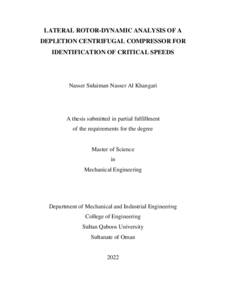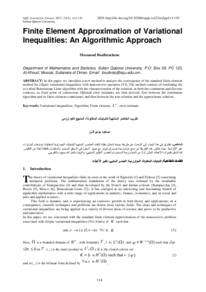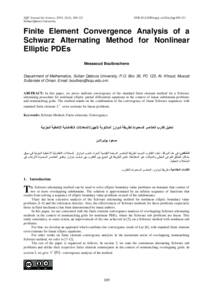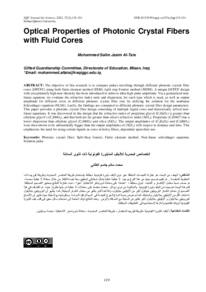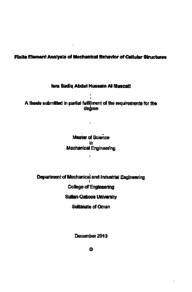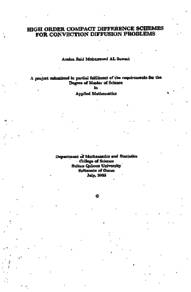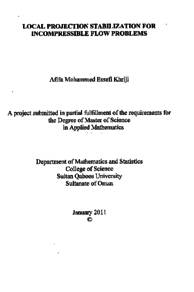Document
Lateral rotor-dynamic analysis of a depletion centrifugal compressor for identification of critical speeds.
Other titles
التحليل الديناميكي الجانبي لضاغط طرد مركزي لرفع ضغط الحقل المستنفد لتحديد السرعات الحرجة
Publisher
Sultan Qaboos University.
Gregorian
2022
Language
English
Subject
English abstract
The research work is aimed to identify the reason of applied cap on the study compressor's
maximum continuous operating speed MCOS and propose a solution. Methodology
followed in this study is the finite element method (FEM) in which the shaft with all
attached discs to it where modelled and studied. Timoshenko beam theory is used while
developing the matrices of mass, stiffness, damping and force which form the equation of
motion (EOM). Shaft and discs material of construction properties are used in the
calculation. MATLAB is used to solve the model.
The results of rotor-dynamic analysis are then used to study the nature of the second
critical speed (CS) and the severity of response analysis to mass unbalance at the CS. The
study identifies that the second CS at two bearing's stiffness conditions; namely Normal
Minimum Stiffness and Minimum Stiffness is not critically damped. That is proved by
having amplification factor (AF) higher than the maximum allowed by the American
Petroleum Institute API in both cases. API standard No. 617 limit is 2.5 and the results
show AF of 3.65 for the normal minimum stiffness and 3.78 for the minimum stiffness
case. Consequently, the study provides cautionary recommendations that can be applied
to avoid running the compressors with the above-mentioned conditions and permanent
solutions to push the second CS out of the operating range.
Member of
Resource URL
Arabic abstract
يهدف العمل البحثي إلى تحديد سبب تقليل السرعة المتواصلة القصوى في الضواغط واقتراح الحلول. المنهجية المتبعة في هذه الدراسة هي طريقة العناصر المحدودة حيث تمت نمذجة ودراسة عمود المحرك مع جميع الأقراص الملحقة به. تُستخدم نظرية تيموشينكو أثناء إعداد مصفوفات الكتلة والصلابة والتخميد والقوة التي تشكل معادلة الحركة. لقد تم استخدام مواد العمود والأقراص لاضافة الخصائص في الحساب. بعد ذلك تُستخدم نتائج التحليل الديناميكي الدوار لدراسة طبيعة السرعة الحرجة الثانية CS وتحليل الاستجابة لعدم توازن الكتلة في CS. وجدت الدراسة أن السرعة الحرجة الثانية في حالتين من صالبة المحمل )الطبيعية األدنى واألدنى( ال يتم تثبيطا بالشكل المثالس المطلوب. تم إثبات ذلك من خلال وجود عامل تضخيم AF أعلى من الحد الأقصى المسموح به بواسطة API في كلتا الحالتين. حد -617API هو 2.5 وتظهر النتائج 3.65 AF لحالة الصلابة الطبيعية الأدنى و 3.78 لحالة الصلابة الأدنى. وبالتالي ، تقدم الدراسة توصيات تحذيرية يمكن تطبيقها لتجنب تشغيل الضواغط بالحالات المذكورة أعلاه والحلول الدائمة لإخراج CS الثاني من نطاق التشغيل.
Category
Theses and Dissertations

